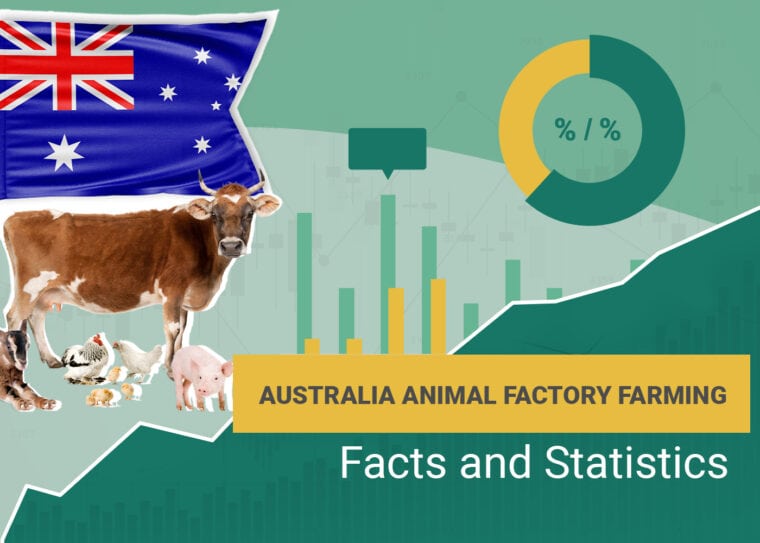
Click to Skip Ahead
Note: This article’s statistics come from third-party sources and do not represent the opinions of this website.
Factory farming is common across the world, especially in well-developed countries. Alongside the U.K., the U.S.A., and Canada, much of Australia’s meat production is a result of factory farms. The truth about factory farming and the suffering that the animals go through is often overlooked in favour of the convenience of readily accessible meat in supermarkets.
To shed light on the details of animal factory farming, here are 16 disheartening statistics on the trade in Australia.
The 16 Australia Animal Factory Farming Statistics
- 70% of the meat produced in Australia is supplied by two major corporations.
- Since the 1970s, pork production has increased by 50%.
- Red meat production increased by 3.4% in the September 2022 quarter.
- 6,800 liters of water are used for every 1 pound of beef.
- More than 4.9 million animals are slaughtered for meat every year.
- 80% of beef sold at major retailers comes from factory farms.
- 5.9 million lambs were slaughtered in the September 2022 quarter.
- 21 million layer hens are confined in Australian egg farms.
- About 700 million broiler chickens are raised in factory farms every year.
- Over 26 million chickens die in farm sheds every year.
- Around 700,000 male calves are slaughtered within their first week of life.
- About 1.6 million kangaroos are killed for their meat and skin each year.
- Between 10 and 15 million lambs die from neglect, starvation, and exposure each year.
- Australia exports millions of live animals under cruel conditions every year.
- 15% of sheep on live export vessels have wool longer than regulation allows.
- Two out of three Australians want to end the live export trade.

 Meat Production Statistics
Meat Production Statistics
1. 70% of the meat produced in Australia is supplied by two major corporations.
(Voiceless)
With meat being a major part of many people’s diets, you’d expect the production to be supplemented across several corporations to meet the demand. However, this isn’t the case.
Although some of the meat in Australia is produced by various corporations approved by the Royal Society for the Prevention of Cruelty to Animals (RSPCA), 70% is produced by two major corporations. They rely on factory farms to meet the high demand for meat products and have replaced family farms as the biggest meat producers in the country.
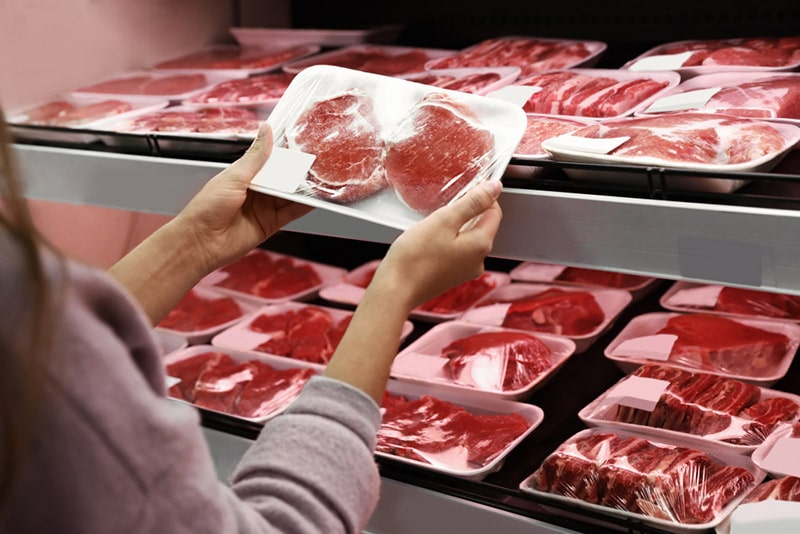
2. Since the 1970s, pork production has increased by 50%.
(Voiceless)
Factory farming benefits from the increased demand for meat production, but it’s also a cause for the rise of meat-oriented diets. With the high yield gained from factory farms compared to what’s produced by small family farms, more people have access to more meat.
With the help of factory farming, pork production in Australia has increased by 50% since the 1970s. The number of farms producing pork, however, dropped from 40,000 to about 1,500 in 2014.
3. Red meat production increased by 3.4% in the September 2022 quarter.
(Australian Bureau of Statistics)
An easy way to see how factory farming affects the food industry is to look at how much meat is produced during certain times of the year. You can see how many factory farm animals are slaughtered and how much meat is supplied to meet rising demands in the country.
During the September 2022 quarter in Australia, the production of red meat increased by 3.4%. In comparison, the production of chicken meat increased by 2.9%.
4. 6,800 litres of water are used for every 1 pound of beef.
(Animal Clock AU)
It’s not just the cruelty to the animals confined in factory farms that makes them such awful places; it’s also the impact on the environment. Meat production is expensive, both in the cost of the animals slaughtered for the cause and in how the meat is processed.
One pound of beef isn’t much, but the production process takes 6,800 litres of water. The average person uses the same amount of drinking water over 7 years.

5. More than 4.9 million animals are slaughtered for meat every year.
(Animal Clock AU)
Land and sea animals are major parts of Australia’s food supply. Factory farms claimed the lives of around 746 million land animals in 2017, and excessive fishing killed around 396 million fish and 3.8 billion shellfish.
The lives of all the marine animals that are lost are hard to calculate accurately. Many in the industry die as bycatch or as feed fish. The yield is also measured in tonnes rather than the number of animals caught.
6. 80% of beef sold at major retailers comes from factory farms.
(Farm Transparency Project)
Beef is a popular meat, but it’s not always clear where it originates. In Australia, 80% of the beef in your local supermarket is produced at factory farms, where the cows are slaughtered at 18 months old after living in cramped and dirty conditions.

7. 5.9 million lambs were slaughtered in the September 2022 quarter.
(Australian Bureau of Statistics)
Sheep and lambs aren’t not only shipped overseas, but their wool and meat are also used in Australia. Around 5.9 million lambs were slaughtered during the September 2022 quarter alone. This is an increase of 15.3% compared to the June 2022 quarter, when 5.1 million lambs were slaughtered.
In the same time frame, 145,106 tonnes of meat were produced. This is an increase of 10.5% from the 131,300 tonnes of lamb meat produced in the previous quarter.
Animal Welfare Statistics
8. 21 million layer hens are confined in Australian egg farms.
(Animal Liberation Queensland)
Eggs are highly desired products of factory farms in Australia, but the conditions that the hens live in are no better than they are for any other animal bred on these farms. To meet demand, about 21 million hens are kept in egg farms throughout Australia.
They’re kept in tight quarters, and the crowded environment often leads to the hens injuring each other during fights. They’re often subject to “debeaking” procedures — often without anaesthesia or painkillers — and the pain often leads to starvation when the hens can’t eat or drink. The roosters hatched in these facilities are killed at birth.
9. About 700 million broiler chickens are raised in factory farms every year.
(World Animal Protection)
Chicken is loved for its versatility and taste, which only increases the demand for the meat. 700 million chickens are bred for meat purposes in Australia alone, and the vast majority are kept in factory farms. They’re specifically bred to grow as large as possible in a short amount of time. Due to their living conditions and the forced growth, they can suffer from breathing issues, skin burns, broken bones, and psychological stress before they’re killed at 12 weeks old.
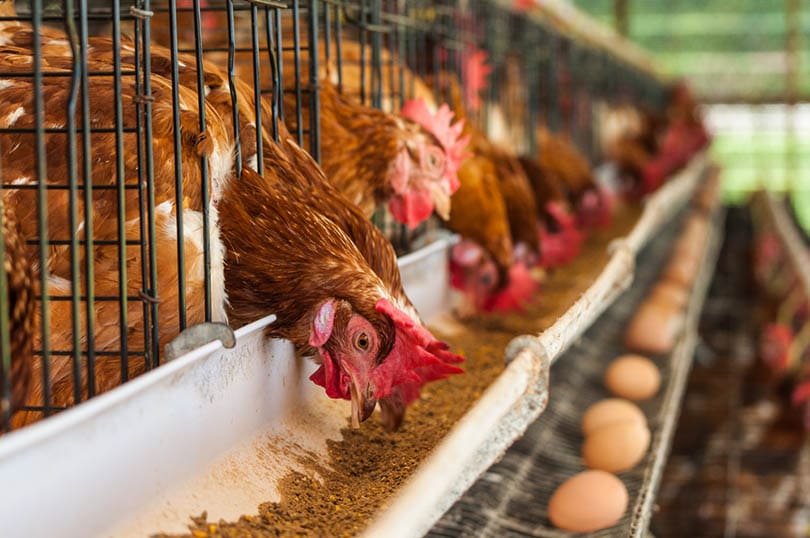
10. Over 26 million chickens die in farm sheds every year.
(Animals Australia)
Along with being exploited for their meat production, chickens are crammed into egg farms. Hens and broiler chickens are found in most factory farms around the world, including Australia and their death rate is high. In Australian farm sheds, over 26 million chickens die every year due to the harsh conditions in which they live and the neglect that they’re shown during their lifetime.
11. Around 700,000 male calves are slaughtered within their first week of life.
(Animal Liberation Queensland)
Although you might assume that dairy farms don’t have the cramped quarters of factory farms dedicated to meat production, they do rely on cows producing milk, which means the animals are almost constantly pregnant to keep the supply going.
While the female calves are kept to be raised as dairy cattle themselves, the male calves are taken from their mothers as soon as they’re born. About 700,000 male calves are slaughtered within their first week of life every year.
12. About 1.6 million kangaroos are killed for their meat and skin each year.
(World Animal Protection)
Kangaroos are animals commonly associated with this country. Unfortunately, they aren’t treated any better than other farm animals bred for meat and clothing. 1.6 million kangaroos are shot every year to meet demands for their meat and so their skin can be used for clothing. Many of the animals die slowly due to the shot being debilitating rather than fatal.
Many younger kangaroos are also abandoned or beaten to death due to the lack of profit that they offer. To the hunting industry, young kangaroos are often considered “collateral damage.”
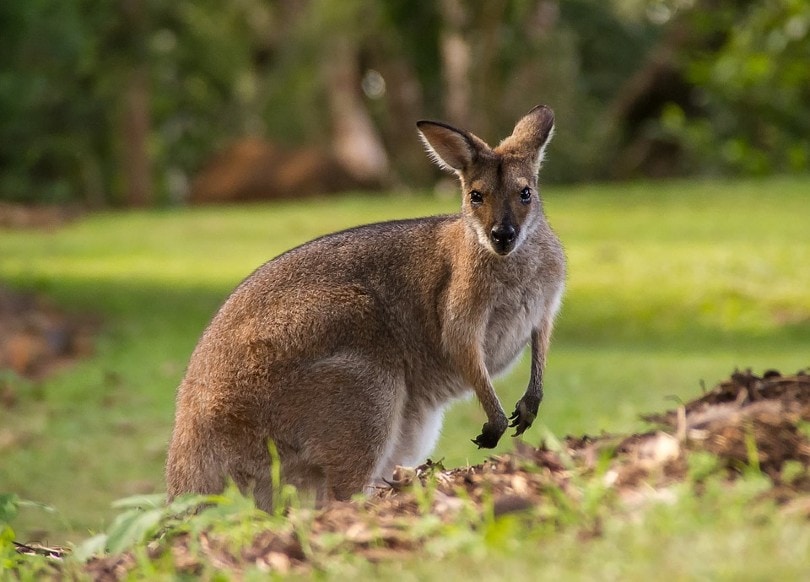
13. Between 10 and 15 million lambs die from neglect, starvation, and exposure each year.
(Farm Transparency Project)
Sheep are exploited for their usefulness in the food and clothing industries. They’re bred for both meat and wool and are often force-bred to ensure that the lambs are born in winter. Due to this process throughout the industry, the lambs born in factory farms often lack the care that they need to grow properly. Between 10 and 15 million newborn lambs die every year due to neglect, starvation, and exposure to extreme weather conditions during winter.
Exportation of Animals Statistics
14. Australia exports millions of live animals under cruel conditions every year.
(World Animal Protection)
Animal factory farming in Australia isn’t solely intended for the benefit of Australians; many farm animals are exported to other countries for their meat and skin. Millions of animals, including sheep, are shipped on lengthy voyages around the globe, and the conditions of the transport often lead to many of them dying before reaching their destination.
The animals are crammed into tight spaces, given minimal access to food and water, and suffer from excessive temperatures. Unfortunately, the survivors of the voyage often suffer further once they reach their destination.
15. 15% of sheep on live export vessels have wool longer than regulation allows.
(RSPCA)
The cramped conditions of the vessels that transport live animals out of Australia aren’t the only problem. Along with not being able to reach food or water, the animals are often neglected during the voyage.
Sheep will often stand on wet manure for the entirety of the trip, and 15% of them will suffer from having wool that is longer than what is allowed by regulations. Since extreme heat is also a common problem on these vessels, their excess wool means the sheep suffer even more.
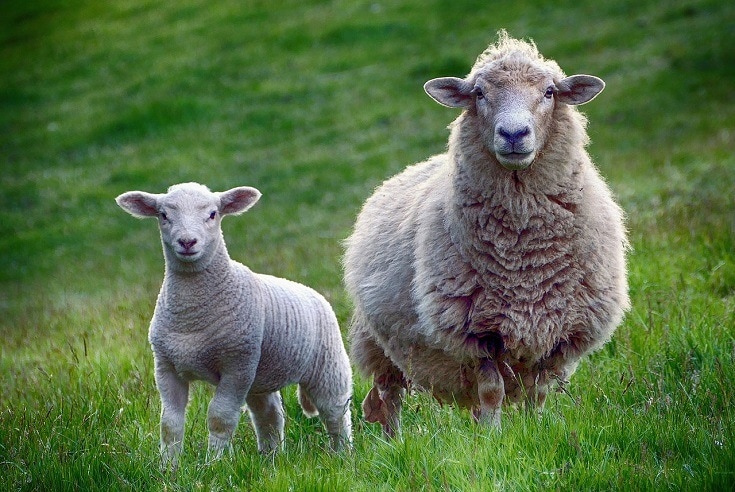
16. Two out of three Australians want to end the live export trade.
(RSPCA)
Despite the continuing horror of the live export trade in Australia, it makes up a major part of the meat production industry. Although steps have been taken to improve the conditions the live animals face when transported overseas, they’re still often transported during extreme weather conditions, which leads to a great deal of suffering. Two out of three Australians want to end the exportation of live animals altogether and rely solely on trading frozen meat products.
Frequently Asked Questions About Animal Factory Farming In Australia
What Is Factory Farming?
Factory farming was introduced as a way to boost the production of animal products without raising costs. It’s a massive feature of modern animal farming around the world and is the source of many meat, eggs, and other animal products.
The idea started in the U.S.A. during the 1930s, with pig slaughterhouses. Due to advancing technology mechanising many of the slaughterhouses, the process quickly grew to include other livestock animals. The efficiency of the high yields and relatively low costs soon led to this farming method being used in other countries too.
Why Is Factory Farming Bad?
When you consider the constant demand for meat products, factory farming is unparalleled at keeping up with the world’s desire for animal products. However, the benefits stop there. In practice, factory farming is one of the worst ways to farm animals.
In factory farms, livestock animals — like pigs, cows, sheep, chickens, and many others — are kept in poor conditions to keep care costs low. As many animals as possible are crammed into a small area. Many animals, like broiler chickens, are also bred specifically to grow as big as possible in a short amount of time.
The tight quarters, dirty conditions, and forced breeding methods lead to countless health issues. Many of the animals die before they’re sent to slaughter due to neglect, starvation, or exposure.
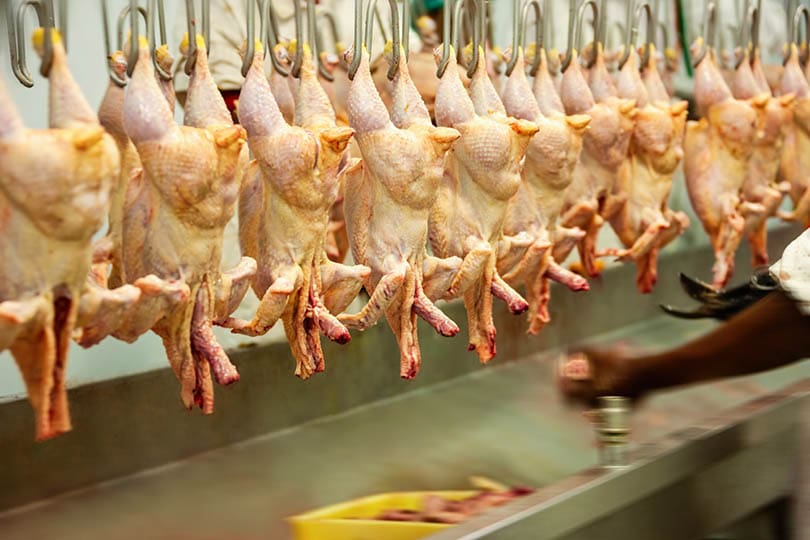
Why Does Factory Farming Still Exist?
Despite the horrors of factory farming, the facilities make up most of the meat supply in Australia and other developed countries around the world. Although the suffering of the animals has led to many animal welfare organizations fighting against factory farms, they still exist.
The continued need for cheap meat and other animal products means the products from factory farms are in great demand. More humane farms often cannot meet the same high demands that factory farms can and are more expensive to run.
Can I Help Without Giving Up Meat Altogether?
Choosing to cut meat from your diet entirely is the most effective way to make a stand against animal cruelty, but it’s not the only option. You can enjoy meat in your diet without drastically changing what you eat, though you will still need to adjust your meal plans.
Help prevent food waste by only purchasing meat that you know that your family will eat. Adjust your meal plan to use any leftover meat products — for example, make chicken stock from the carcass of a whole chicken. Cut down on the amount of meat that you eat by limiting how much is contained in your meals or by limiting meat content to one meal a day.
Checking the label on meat products and making sure they’re RSPCA approved also ensures that the animals you’re eating weren’t subject to cruelty when they were raised.
What Are the Alternatives to Factory Farming?
Despite factory farming being the major source of animal products in the world, there are more humane alternatives for meat lovers to consider. Organic farming, regenerative farming, and permaculture all rely on natural and humane means to supply food products to the public. These methods are sustainable and much less harmful to the environment compared to factory farms.
Conclusion
In Australia, factory farming is the primary source of most of the meat products on the shelves of your local supermarket. The convenience of commercial meat, however, has a horrifying downside that often gets overlooked. We hope that these statistics help you understand why factory farming is so terrible and encourage you to find RSPCA-approved meats instead.
Featured Image Credit: Pexels, Pixabay





